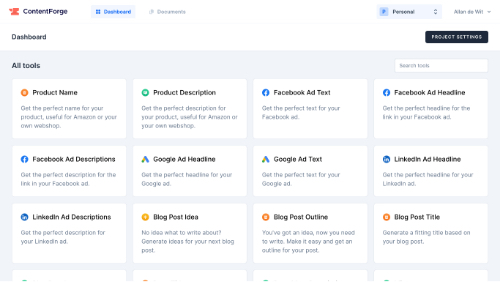
6 Ways to Identify the Right Target Audience
Jun 17, 2022 · 4 min read
You can have the best product or service in the world, but if you're not marketing it to the right people, you're not going to get very far. That's why it's so important to identify your target audience. But how do you do that?
What is a target audience?
A target audience is the group of people who are most likely to buy your product or use your service. When you're trying to identify your target audience, it's important to think about things like age, gender, location, interests, and income level. Usually, businesses will target a specific audience, rather than try to appeal to everyone.
For example, a company that makes high-end bicycles is probably going to target people who are interested in fitness and have the disposable income to spend on an expensive bike. They're not going to try to appeal to everyone, because they know that not everyone is their target audience.
Their target audience might look something like this:
- 25-40 years old
- Lives in a city
- Has a job that pays well
- Is interested in fitness
How do you identify a target audience?
There are a few different ways that you can go about identifying your target audience. Here are six of the most popular methods:
1. Use market research surveys
One of the best ways to identify your target audience is to ask them directly. You can do this through market research surveys. When you send out a survey, be sure to include questions about things like age, gender, location, interests, and income level. This will give you a good idea of who your target audience is and what they're looking for.
2. Look at your current customer base
Another great way to identify your target audience is to look at your current customer base. If you already have customers, chances are they fit into your target audience. Take a look at who your current customers are and try to find commonalities between them. This will give you a good idea of who you should be targeting.
3. Use demographic data
If you don't have any current customers, or if you want to reach a wider audience, you can use demographic data to identify your target audience. Demographic data is information about things like age, gender, income level, etc. You can usually find this data from the Census Bureau or from other market research firms.
4. Use psychographic data
In addition to demographic data, you can also use psychographic data to identify your target audience. This type of data looks at things like values, attitudes, and lifestyle choices. again, there are a number of ways to get this data, but one of the easiest is through market research surveys. You can either conduct your own survey or purchase a market research report.
5. Use behavioral data
You can also use behavioral data to identify your target audience. This type of data looks at things like buying habits and web browsing behaviors. These behaviors will give you clues as to what people are interested in and how they like to shop. You can get this data from a number of sources, but one of the easiest is through web analytics tools like Google Analytics.
6. Look at your competition
Who is your competition targeting? There’s a good chance that their target audience will overlap with yours to some extent. By understanding who they’re trying to reach, you can get a better understanding of who you should be targeting as well.
One way to do this is to look at their marketing materials and see who they’re targeting. You can also look at their customer base and try to segment it based on demographics, interests, and other factors.
How to create a target audience profile?
Now that you understand how to target your audience, it’s time to start creating your target audience profile. This will be a document that contains all the information you’ve gathered about your ideal customer.
Try to define a person (or group of people) who would be interested in your product or service. Include as much detail as possible, such as their age, gender, location, income level, interests, and so on.
Once you have all of this information gathered together, you can start using it to create marketing materials that are tailored to your target audience. This will help you reach them more effectively and convert more leads into customers.
How do you use a target audience in your marketing?
There are a few different ways you can use your target audience in your marketing. For one, you can use it to create buyer personas. These are fictitious characters that represent your ideal customer. By creating buyer personas, you can get a better idea of who you’re targeting and what needs they have.
You can also use your target audience to segment your email list or create customized social media ads. This way, you’re only reaching the people who are most likely to be interested in what you have to offer.
Finally, you can use your target audience to inform the content you create. By understanding who you’re speaking to, you can tailor your message and make sure it’s relevant to their needs. This will help improve your conversion rate and increase the chances that they’ll take action after reading or watching your content.
Remember, the more data you have, the better equipped you'll be to create content that resonates with your audience. So get out there and start collecting data!

We serve cookies on this site to analyze traffic, give you a better experience, and remember your preferences.
As is common practice with almost all professional websites this site uses cookies, which are tiny files that are downloaded to your computer, to improve your experience. Here we will describe what information they gather, how we use it and why we sometimes need to store these cookies. We will also share how you can prevent these cookies from being stored however this may downgrade or 'break' certain elements of the sites functionality.
You can prevent the setting of cookies by adjusting the settings on your browser (see your browser Help for how to do this). Be aware that disabling cookies will affect the functionality of this and many other websites that you visit. Disabling cookies will usually result in also disabling certain functionality and features of the this site. Therefore it is recommended that you do not disable cookies.
We use cookies when you are logged in so that we can remember this fact. This prevents you from having to log in every single time you visit a new page. These cookies are typically removed or cleared when you log out to ensure that you can only access restricted features and areas when logged in.
In some special cases we also use cookies provided by trusted third parties. The following section details which third party cookies you might encounter through this site.
- This site uses Google Analytics which is one of the most widespread and trusted analytics solution on the web for helping us to understand how you use the site and ways that we can improve your experience. These cookies may track things such as how long you spend on the site and the pages that you visit so we can continue to produce engaging content. For more information on Google Analytics cookies, see the official Google Analytics page.
- As we sell products it's important for us to understand statistics about how many of the visitors to our site actually make a purchase and as such this is the kind of data that these cookies will track. This is important to you as it means that we can accurately make business predictions that allow us to monitor our advertising and product costs to ensure the best possible price.
Hopefully that has clarified things for you and as was previously mentioned if there is something that you aren't sure whether you need or not it's usually safer to leave cookies enabled in case it does interact with one of the features you use on our site.
However if you are still looking for more information then you can contact us via [email protected].